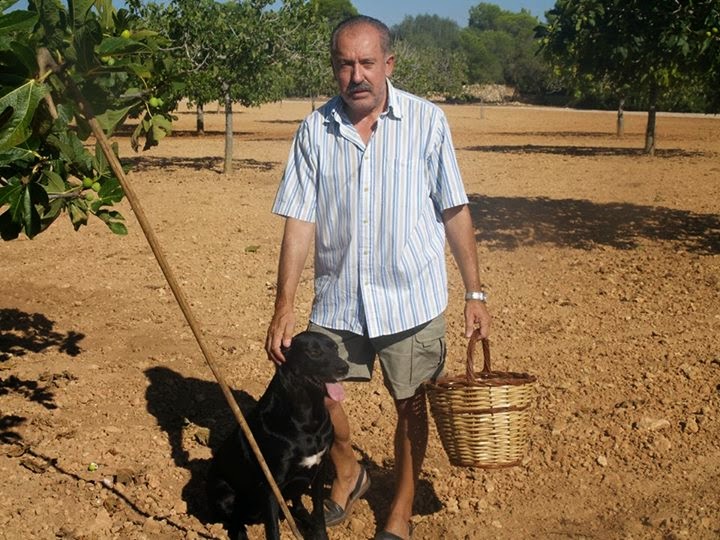It was here WAY before you even tried Goof-Friend-Mike
Glossary
| Internode |
The segment of a plant stem between two successive nodes (the points where leaves or branches attach). In fig cultivation, the length of internodes can indicate growth vigor and influence pruning decisions. |
| Ira Judson Condit |
|
| Iron Chlorosis |
A condition where leaves turn yellow due to iron deficiency, often caused by high soil pH or poor drainage. Treating chlorosis involves soil amendments or foliar sprays. |
| ISO |
In Search Of |
| JFE |
Just Fruits & Exotics: Some strains of fig varieties are attributed to this nursery. |
| JM |
Joe Morle of figtrees.net |
| JOMF |
Just one more fig. |
| Juvenile Growth |
The early phase in a fig tree’s life when it focuses on vegetative growth rather than fruit production. Patience is required as the tree matures into its fruiting phase. |
| KK |
Keith Karausky: Most notable for the strain of Black Madeira KK. |
| Latent Bud |
Dormant buds on fig branches that remain inactive until conditions are ideal for growth. These buds can produce new shoots or fruit after pruning or environmental changes. |
| Latex |
The sap from fig trees can cause allergic reactions or irritation in sensitive individuals. Wearing gloves during pruning or harvesting is recommended. |
| Latex Irritation |
The sap from fig trees can cause allergic reactions or irritation in sensitive individuals. Wearing gloves during pruning or harvesting is recommended. |
| Laticifer |
Specialized cells or ducts in fig trees that produce and transport latex, a milky fluid. This latex can be seen when branches or leaves are cut and plays a role in the plant's defense mechanisms against herbivores and pathogens. |
| Leaf Curl |
A symptom often caused by pests or nutrient deficiencies, where fig leaves curl inward or outward abnormally. |
| Leaf Drop |
A stress response in fig trees caused by overwatering, drought, or sudden temperature changes. Identifying the underlying issue helps prevent future leaf loss. |
| Lignification |
The process of stems hardening into wood as a fig tree matures. This transition strengthens the tree and improves its ability to bear fruit. |
| LSU |
Louisiana State University: In the context of figs, this refers specifically to the LSU AgCenter fig-breeding program. Known to have bred figs many years ago with some introduced to the public. |
| MA |
Mark Albert: Pineapple Guava Tour, New Seedling Varieties From a Feijoa Collector and Breeder. |
| Main crop |
The main crop is the second, and often larger, crop produced by certain fig varieties, typically on the current year's growth. It ripens later in the season, after the breba crop (if the variety produces one). Main crops are usually the most significant for consumption, offering a sweeter and more developed flavor compared to the breba. Figs like Smyrna and San Pedro rely on pollination for their main crop, making this stage crucial for successful fruiting. Collectors appreciate the main crop for its size, flavor, and the extended harvest season it offers. |
| Mamme |
Also known as the over winter crop. Or the carry over crop. Simply put. This is where the wasp stays during the winter. When temperatures rise. The wasp leave this crop and enter the developing profichi crop. The Mamme fig is a rare type of Ficus carica that produces fruit known as the mamme crop, which develops in the winter and matures in spring. These figs are typically found in caprifig trees and play a crucial role in the life cycle of fig wasps, as they provide a habitat for the wasps during colder months. Mamme figs are small, less palatable, and not usually grown for consumption. Instead, they are essential for pollinating certain fig varieties that depend on fig wasps. Collectors and growers often find the mamme fig fascinating for its ecological importance in fig reproduction. |
| Mammoni |
The mammoni also known as the summer crop (Think main crop on your female figs). Is where the wasp that did not go pollinate your female figs went. They will lay there eggs in these figs. They will also pollinate these figs. As these figs also have female flowers. It is very rare in the wild for the seeds to develop and later sprout. As the wasp larvae consume them. You can hand pollinate these figs and get viable seed. |
| Marcotting |
Marcotting, also known as air layering, is a propagation technique used for fig trees and other plants. It involves making a small cut or removing bark on a branch, applying a rooting medium like moist sphagnum moss, and wrapping it to encourage root development. Once roots form, the branch is cut and planted as a new tree. Marcotting is popular among collectors and growers because it produces genetically identical plants while maintaining the parent tree's traits. It is especially useful for preserving rare or desirable fig varieties. |
| Mites |
Microscopic pests that feed on fig leaves and fruit, causing discoloration and deformities. Early detection and treatment with horticultural oils can help manage infestations. |
| MP |
| Mulching |
Applying organic material like straw, wood chips, or compost around the base of fig trees. Mulching conserves soil moisture, suppresses weeds, and improves soil structure. |
| Mycorrhizae |
Symbiotic associations between fungi and plant roots, including those of fig trees. These relationships enhance nutrient and water uptake, improve soil structure, and can increase the fig tree's resistance to certain diseases. |
| NGRP |
National Genetic Resources Program: See GRIN. |
| Nitrogen Deficiency |
A lack of nitrogen can cause slow growth, pale leaves, and reduced fruit production in fig trees. Balanced fertilization helps address this common nutrient issue. |
| Noob |
newbie: Someone new to growing figs and all the idiosyncracies involved. |
| NPGS |
National Plant Germplasm System: A collaborative effort to safeguard the genetic diversity of agriculturally important plants, including figs. The mission of the NPGS is to support agricultural production by acquiring, conserving, evaluating, documenting, and distributing crop germplasm. |
| Nutritional Profile of Dried Figs |
Dried figs are a nutrient-dense snack, rich in fiber, calcium, potassium, and iron. They provide a concentrated source of natural sugars and are a popular choice for energy-boosting snacks and desserts, as well as a staple in many traditional cuisines. |
| Organic Fig |
Growing figs without synthetic fertilizers or pesticides, focusing on soil health and natural pest control. Organic methods appeal to environmentally conscious consumers. |
| Ostiole |
Ostiole is the small, natural opening at the apex of a fig fruit, often referred to as the "eye." This structure serves as an entry point for air, water, and pollinators, such as fig wasps, in certain fig varieties. The size and shape of the ostiole can vary between fig types and significantly impact the fruit's resistance to pests, diseases, and splitting. In some varieties, a tightly closed ostiole helps protect the fruit, while others with more open ostioles may require careful monitoring to prevent damage or spoilage. |
| Overripe |
Figs left on the tree past their prime, which may attract pests or ferment. Harvesting figs at the peak of ripeness ensures optimal flavor and quality. |
| Overwintering Protection |
Measures taken to protect fig trees from frost damage during winter, such as wrapping trunks, mulching heavily, or moving potted trees indoors. |
| Partial Sunlight |
The minimum light a fig tree needs to thrive. While most figs prefer full sun, some varieties can tolerate partial shade in hot climates. |
| Peat Moss |
Harvested dead moss that had sunk below the living spaghnum. It is actually the dead, decayed plant matter of sphagnum moss that settles at the bottom of the sphagnum bogs. Dried and ground. |
| Pectin |
Figs are rich in pectin, a natural fiber that aids in digestion and acts as a gelling agent in preserves. High pectin levels make figs ideal for making jams and jellies. |
| Peeling Skin |
Figs with a delicate skin that naturally peels back when ripe. These figs are prized for their unique texture and easy-to-eat qualities. |
| Perlite |
A lightweight, porous material added to soil mixes to improve aeration and drainage. Perlite is especially useful when rooting fig cuttings. |

 (1883–1981) was an American horticulturist who studied subtropical fruits, including the fig, the olive, and the avocado. His contributions to the fig community were extensive. In addition to his exhaustive fig research, testing, and breeding, he wrote a number of books on figs, including: The Kadota Fig, Fig Characteristics Useful in the Identification of Varieties,
(1883–1981) was an American horticulturist who studied subtropical fruits, including the fig, the olive, and the avocado. His contributions to the fig community were extensive. In addition to his exhaustive fig research, testing, and breeding, he wrote a number of books on figs, including: The Kadota Fig, Fig Characteristics Useful in the Identification of Varieties, 



